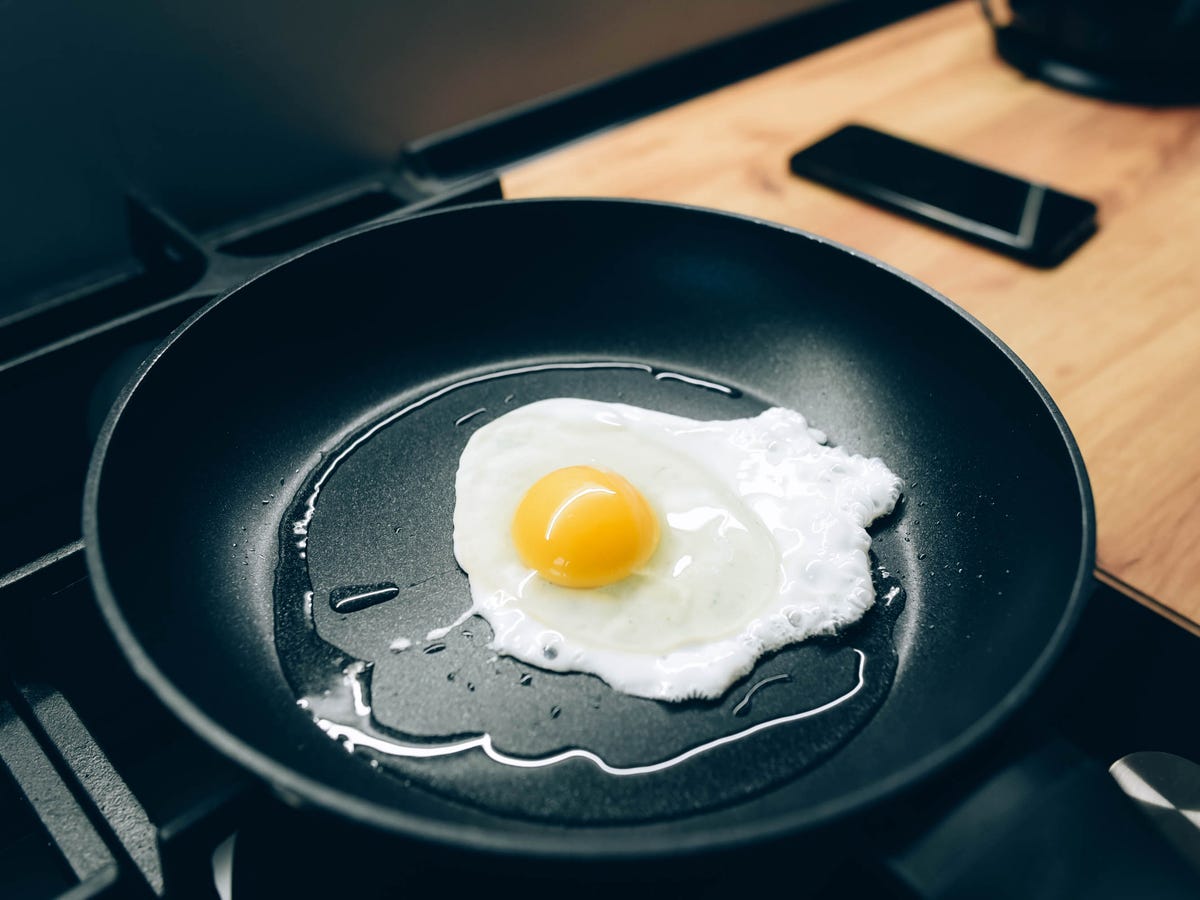While nonstick cookware offers convenience, its effectiveness can diminish over time, resulting in food sticking to the pan and complicating both cooking and cleaning processes. Additionally, a worn nonstick coating may pose the risk of releasing harmful substances into your food. Therefore, it is essential to remove the old nonstick coating before considering reapplication or exploring alternative cookware surfaces. Below, Cook Eat Delicious addresses your queries in this informative article.
Understanding the Need for Nonstick Coating Removal
Determining the Optimal Time for Nonstick Coating Removal
Before delving into the process of removing the nonstick coating, it is imperative to recognize the opportune moment for such an undertaking. Observable signs that signal the necessity for nonstick coating removal encompass discernible scratches or peeling, difficulties encountered during the cleaning of the cookware, and the emergence of a phenomenon where food begins adhering to the surface.
Should any of these indications manifest, it becomes prudent to contemplate the initiation of the nonstick coating removal process.

Prioritizing Safety Measures before Commencing the Procedure
Safety should consistently be the foremost consideration when embarking on such a task. Ensure the use of appropriate protective gear, including gloves and safety glasses, to safeguard against potential harm.
Furthermore, it is advisable to conduct the removal procedure in a well-ventilated environment to mitigate the risk of inhaling any potentially harmful fumes. By prioritizing safety precautions, you can approach the nonstick coating removal process with a heightened awareness of the potential risks and the necessary protective measures in place.
How to remove nonstick coating from cookware?
The Nonstick Coating Removal Procedure
The process of eliminating nonstick coating encompasses several steps. Begin by filling your cookware with water and adding approximately half a cup of baking soda. Allow this mixture to boil for around 15 minutes. The combination of heat and baking soda serves to effectively loosen the nonstick coating.
Following the boiling phase, let the cookware cool down. Then, using a wooden spatula or a plastic scraper, delicately scrape off the nonstick coating. Exercise caution to avoid the use of metal utensils, as they can potentially scratch and harm the underlying surface of the cookware.
For persistent spots, you may need to repeat the process or utilize a non-abrasive scrubbing pad. It is crucial to bear in mind that the objective is to remove the nonstick coating without causing any damage to the cookware itself.
Post-Removal Cleaning and Maintenance
Once the nonstick coating has been completely removed, thoroughly clean the cookware with warm soapy water to eliminate any residual coating particles. Ensure proper drying before storing to prevent the onset of rust.
If your intention is to reapply a new nonstick coating, ensure that the cookware surface is entirely clean and dry. Alternatively, if opting for non-nonstick use, remember to season the cookware regularly to prevent food adherence. This ensures a well-maintained and functional kitchen tool.

Other non-stick coating removal methods
Exploring Techniques for Nonstick Coating Removal
Having uncovered various methodologies for eliminating the coating from your cookware, it’s essential to choose the right approach based on your needs. Whether you opt to replace all your cookware or focus on specific items, selecting the appropriate products for your kitchen is crucial, such as choosing the finest wok compatible with a glass top stove.
Now, let’s delve into diverse methods for removing the old nonstick coating from your cookware:
- Dishwashing Liquid, Hot Water, and Scouring Pad: Gently scrub the nonstick coating with a scouring pad soaked in hot water and dishwashing liquid.
- Soaking: Allow the cookware to soak to facilitate the removal of the nonstick coating.
- Metal Scrubber: Utilize a metal scrubber to effectively remove the nonstick layer.
- Baking Soda: Employ baking soda as an abrasive agent to aid in the removal process.
- Abrasive Sandblasting Method: Utilize aluminum oxide explosive material in an abrasive sandblasting process.
- High Temperature: Subject the cookware to high temperatures to assist in breaking down the nonstick coating.
- Sandpaper: Gently sand the surface using sandpaper to remove the nonstick layer.
- Angle Grinder: Use an angle grinder for more intensive removal.
- Sanding with Aluminum Oxide: Employ aluminum oxide for sanding purposes.
- Walnut Shells: Utilize walnut shells as a natural abrasive for nonstick coating removal.
Remember to consider the specific condition of your cookware and choose the method that aligns with the material and your desired outcome. Each technique comes with its own set of considerations, so proceed with the one that best fits your situation and preferences.
In conclusion, removing the nonstick coating from the cookware is a task that requires patience and care. By following these steps, you can give your old cookware a new lease on life, ensuring many more years of enjoyable cooking.







